Camel Pose – The Power Of Discomfort
Every Pose Matters
When I started practicing yoga, I had no idea how deeply I would fall in love with this process. My daily life is as dynamic as that of most modern people, filled with running errands, work, a child, and a dog. Frequently, those close to me ask how I manage to find time for yoga. The answer is simple: when you have the desire, you also find a way.
Of course, on most days, I often manage to complete only my established poses for about 20 minutes. However, when the weekend arrives, I truly enjoy learning something new that I can practice during the following week. Yoga is incredibly vast, yet it all boils down to organization and motivation. Since I began this journey of self-improvement, as I like to call it, the desire to practice has taken precedence in my mind. Consequently, regardless of what time of day it is—since I often need to adjust my routine on the fly—I consistently find time for my yoga practice.
Yoga as a Way of Perception
Many people believe that practicing yoga indicates a certain obsession. During the classes I’ve attended, teachers often discuss internal mindsets, yet they use someone else’s words and feelings. This method discourages many from exploring yoga more deeply since they don’t resonate with these shared experiences. For example, during a class, a teacher might talk about connecting with the spine and feeling grounded, while others may talk incessantly, leading to distraction.
While performing each asana correctly is crucial, it would be more beneficial to emphasize the importance of breathing. Additionally, I’ve noticed that teachers often overlook correcting improper poses. This brings us to the commercialization of yoga, which can be positive since it helps spread the teachings. However, how these teachings are conveyed is vital.
When I become a practicing trainer—my dream, which I hope to achieve soon—I plan to take a different approach with those who trust me.
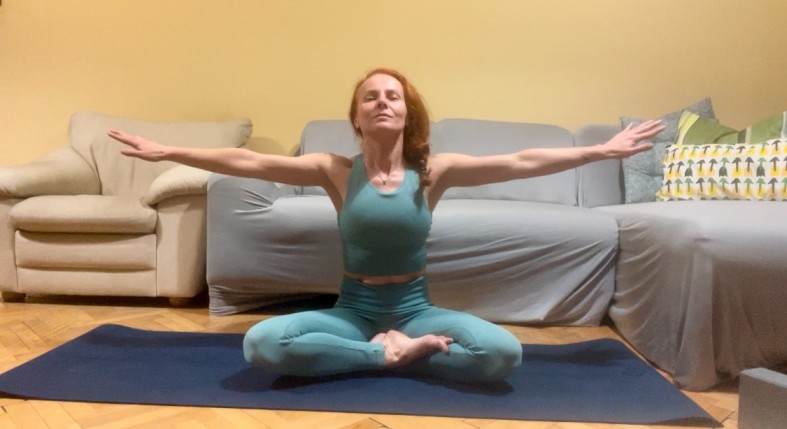
The Beauty of Discomfort
I once shared that I had a complex spinal surgery requiring titanium implants. Yet, this hasn’t stopped me from being active and pursuing what benefits me, both physically and mentally. Like many true love stories, my passion for yoga began with a chance encounter with someone I unexpectedly fell for. Love truly begets love, and from one love, another blossomed.
This connection makes yoga even more special for me, as it channels the positive energy in my life. I also want to dispel a common myth: most of my friends know how spirited and energetic I am, and I still struggle to stay still! However, yoga has not changed my dynamic nature; instead, it has heightened my awareness.
Camel Pose
I want to share how I practice the Camel Pose (Ustrasana). Due to my spinal surgery, I have limited flexibility, but I am actively working to improve that. The human body is beautifully designed and can be trained to serve us well, provided we take care of it.
The Camel Pose is a real challenge for me. Arching my spine forward while opening my shoulders and chest backward requires flexibility that I have yet to master. Still, I believe that with practice, I will succeed.
This pose fascinates me because it connects with the heart (Anahata Chakra), relating to self-love and universal love. It enhances self-awareness while feeling slight discomfort, allowing for emotional cleansing. Overall, Camel Pose is a magnificent practice that helps detoxify the mind by focusing on overcoming that gentle discomfort.
Here’s how I practice:
First, I warm up my body. I love starting with the Cat-Cow Pose and the sequence of Chaturanga (Four-Limbed Staff Pose) to Upward-Facing Dog (Urdhva Mukha Svanasana) and Downward-Facing Dog (Adho Mukha Svanasana). This basic sequence is incredibly powerful.
Next, I kneel and grab a yoga block to help me determine the correct distance and positioning of my feet. I place the block between my feet, with my heels pointing upward and my toes facing backward. The goal here is to avoid any inward or outward rotation of the feet.
Ideally, my knees should be shoulder-width apart. I warm up by gently pushing my pelvis forward and backward, which helps warm my lower back—especially important for me since my implants are at that level (L1-S5).
I then make a complete circular motion with my arms, as if I’m scooping backward. This movement helps position my arms optimally for the pose. I push my body from the waist upwards while arching my spine forward. At the same time, I try to touch my heels with my fingertips. Inhale before rotating your arms back, and exhale while attempting to reach for your heels. Keep your neck extended back.
If you find it difficult at first, like I did, you can practice the Half Camel Pose. In this version, alternate your hands to touch your heels, which makes the motion easier and allows you to keep your neck upright.
I finish my Camel Pose practice with my favorite Craw Pose (Bakasana) and Extended Puppy Pose (Uttana Shishosana)
Importantly, don’t get discouraged. It’s challenging, but as you practice and notice your progress, the joy and satisfaction will be immense.
Now, it’s time to practice. Grab your yoga mat and enjoy your unique experience in your personal practice.
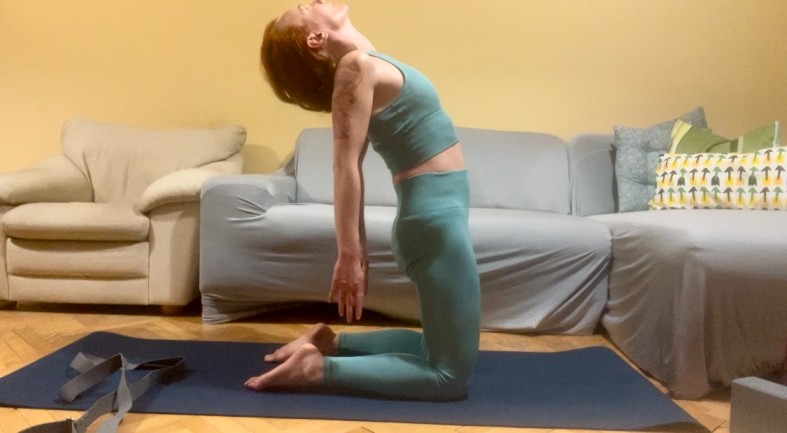
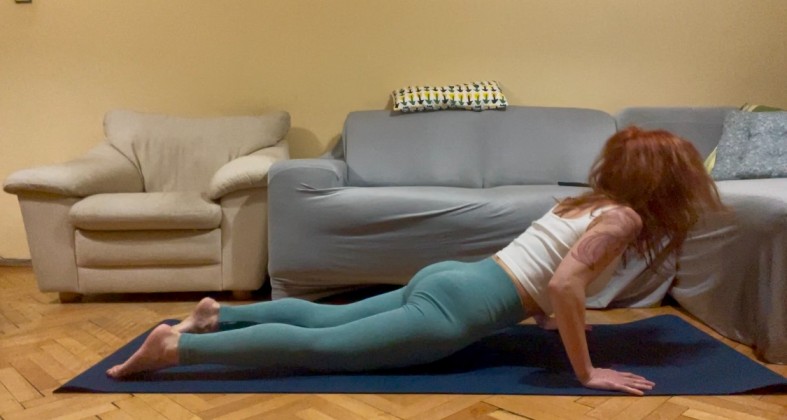

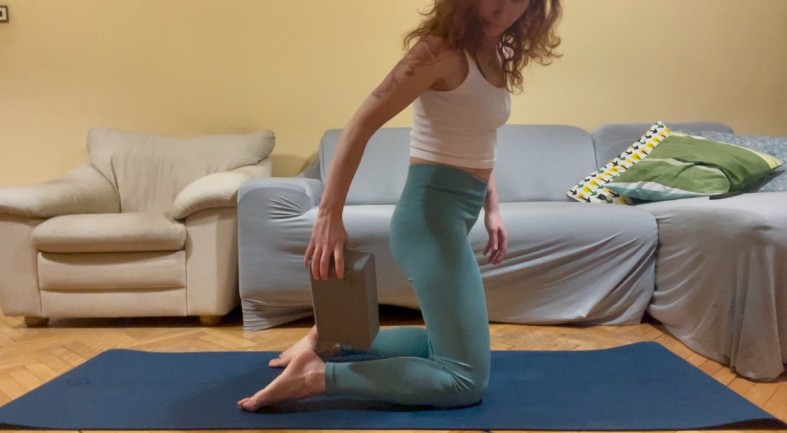
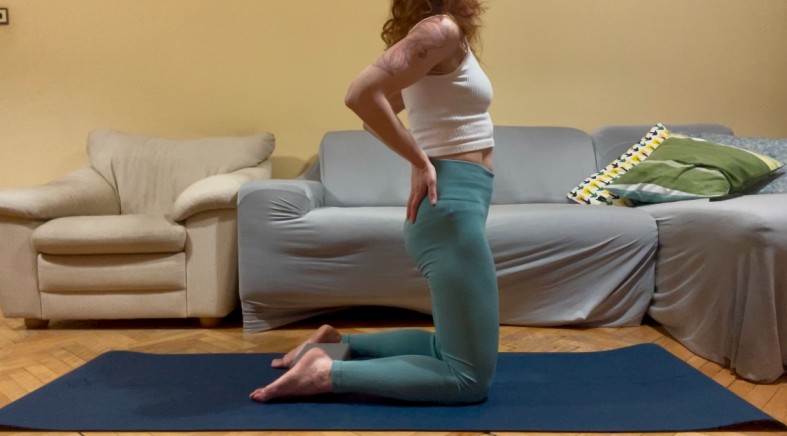

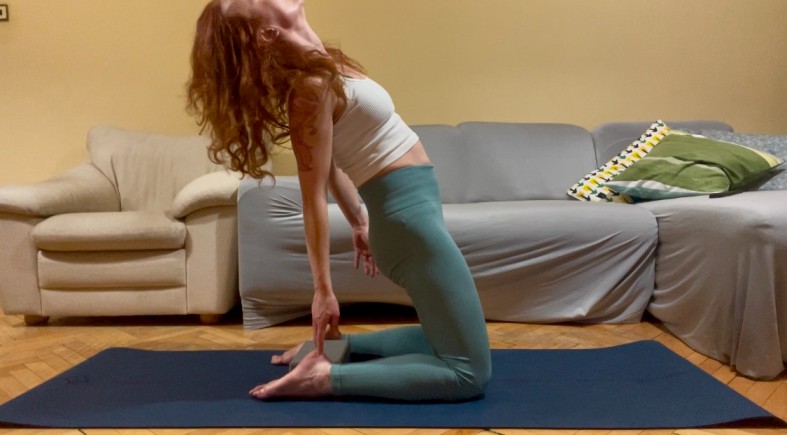
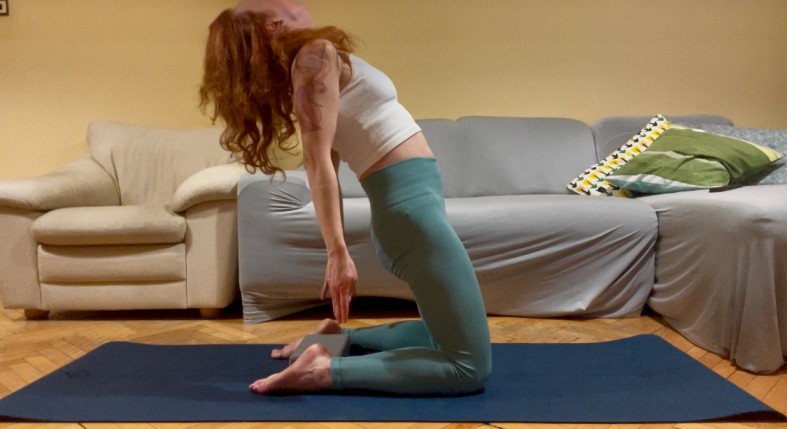

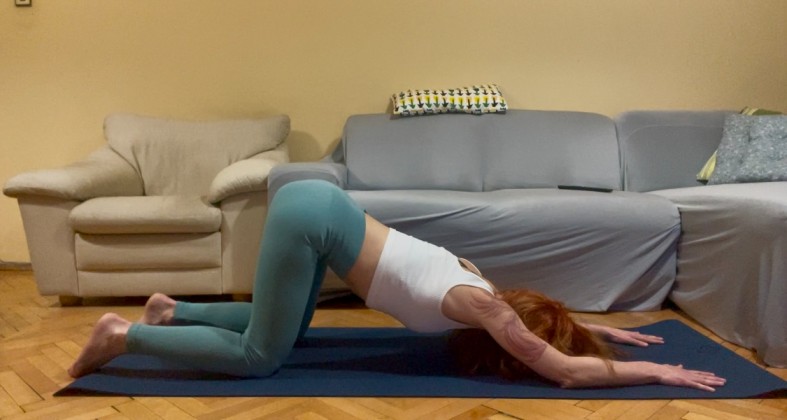
Very well explained and I can se yoga is a skill you can you train well. You should consider doing daily yoga classes and train people online or better even do classes.
Thank you so much Fernando <3
Your writing carries reflective depth, combining intellect, emotion, and meditative pacing. The text unfolds gently, inviting the reader to dwell on each phrase, absorb subtle meaning, and experience a quiet, enduring resonance.